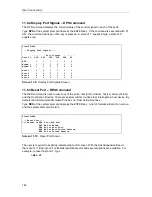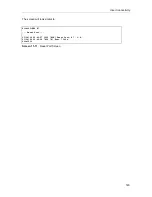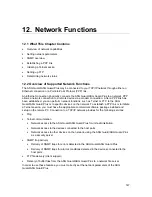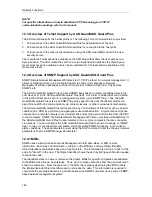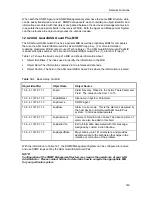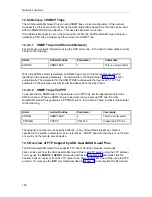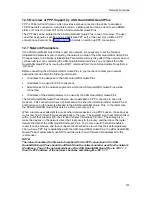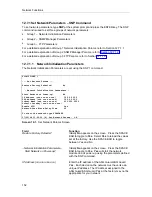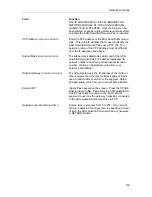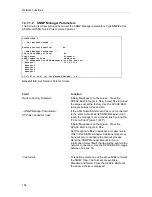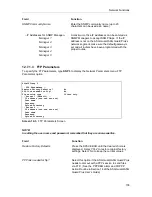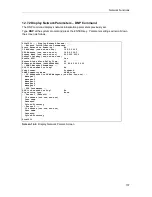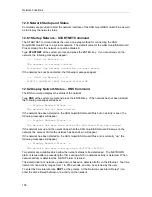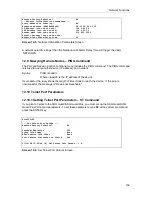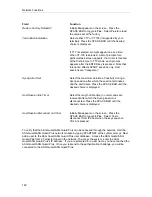
Network Functions
148
NOTE:
For specific information on how to establish a PPP link using your TCP/IP
communications package, refer to its manual.
12.3 Overview of Telnet Support by ASG Guard/ASG Guard Plus
The ASG Guard supports the Telnet protocol. The following Telnet communication is provided:
1.
Telnet access to the ASG Guard/ASG Guard Plus for administration of the unit.
2.
Telnet access to the ASG Guard/ASG Guard Plus for connection to the host ports.
3.
Telnet access to the other network devices, using the ASG Guard/ASG Guard Plus as a
security server.
There are three Telnet sessions available on the ASG Guard that allow the user access to a
Sysop session. The ASG Guard Plus with one or two Expansion Boards has the three Sysop
level Telnet sessions available, but also has an additional 12 Telnet sessions available at the
Host access level.
12.4 Overview of SNMP Support by ASG Guard/ASG Guard Plus
SNMP (Simple Network Management Protocol) is a TCP/IP protocol for network management. It
allows compliant devices to be configured and/or to send error messages to Network
Management software packages such as HP Openview, Cabletron Spectrum, Castle Rock
SNMPc, etc.
The ASG Guard/ASG Guard Plus can send SNMP traps based on alarm conditions detected in
host devices or in the ASG Guard/ASG Guard Plus itself. Any alarm condition that can be listed
in the Action Table can be sent to a management system via an SNMP Trap. Thus, the ASG
Guard/ASG Guard Plus acts as an SNMP trap proxy agent for devices that deliver alarms via
asynchronous RS-232 communication, via contact closures, or other non-network mechanisms.
The ASG Guard/ASG Guard Plus will respond to any of a multitude of "alarms" (such as an error
condition on a PBX) by performing an appropriate user-defined action. A typical action might be
connecting to a remote computer over a modem link and sending error information from the PBX
to that computer. SNMP, the Simple Network Management Protocol, provides a standard way for
the ASG Guard/ASG Guard Plus to report alarms to one or more computers that are connected
via network. You can configure the ASG Guard/ASG Guard Plus to send a message, or "SNMP
trap," to one or more supervisor computers, which are called SNMP managers, in response to
alarm conditions. These parameters are set using the SNP command to set the Group 2 network
parameters (that is, SNMP Manager Parameters).
12.4.1 MIBs
SNMP uses a data structure known as Management Information Base, or MIB, to store
information. Each piece of information, or object, in the MIB has a unique Object Identifier.
Object identifiers are indices based on a tree structure. The information is held in a "node" at the
end of a "branch" in the tree. The Object Identifier shows the path by listing each branch needed
to reach the node.
The identifier serves to name or reference the object. MIBs for specific companies are allocated
to the MIB branch known as enterprise. Thus, each company branches from the general branch
known as enterprise. From that point on in the MIB, the company developing the MIB controls
the information and Object Identifier used to reference the data. This information is required to
coordinate the sending and receiving of data between an SNMP-compliant device and an SNMP-
based network management system.
Summary of Contents for Lucent Technologies Access Security Gateway Guard
Page 12: ...x Page intentionally left blank ...
Page 28: ...ASG Guard Overview 16 Page intentionally left blank ...
Page 36: ...Physical Connections 24 Page intentionally left blank ...
Page 60: ...Modem Port Setup 48 Page intentionally left blank ...
Page 82: ...Modifying the User Database 70 Page intentionally left blank ...
Page 120: ...Action and Event Tables 108 Page intentionally left blank ...
Page 158: ...User Connectivity 146 Page intentionally left blank ...
Page 188: ...Log Functions 176 Page intentionally left blank ...
Page 236: ...Troubleshooting 224 Page intentionally left blank ...
Page 252: ...Internal Battery Replacement 240 Page intentionally left blank ...
Page 258: ...Glossary of Command References 246 Page intentionally left blank ...











